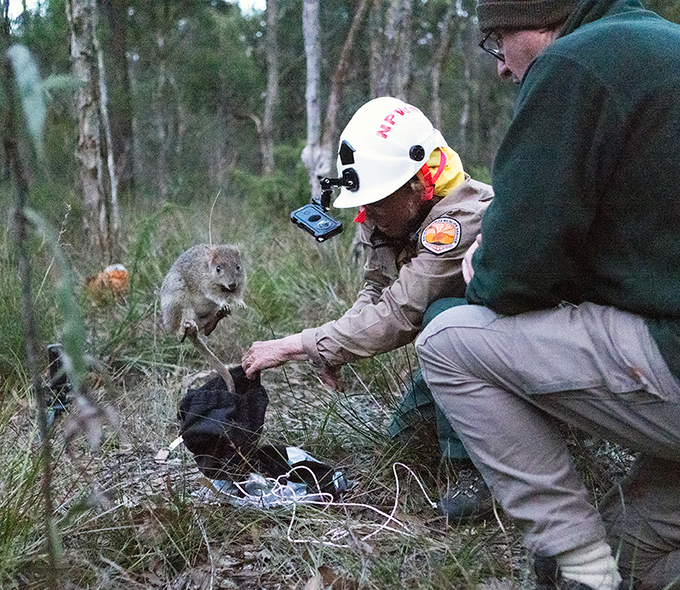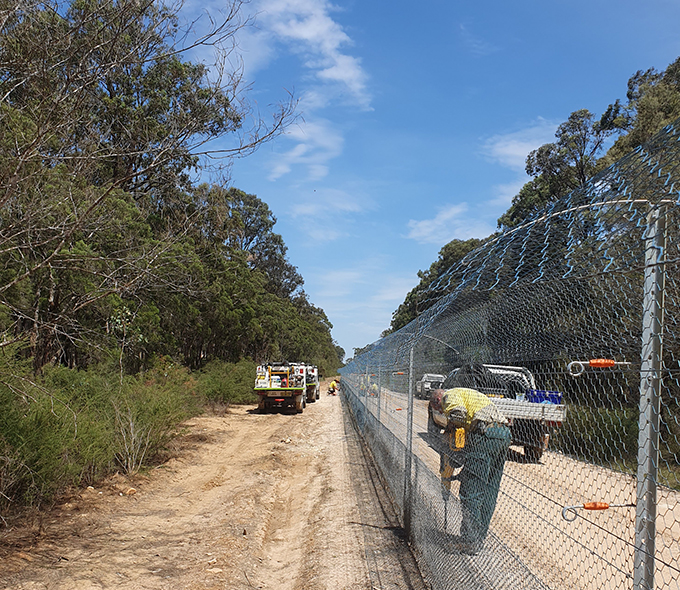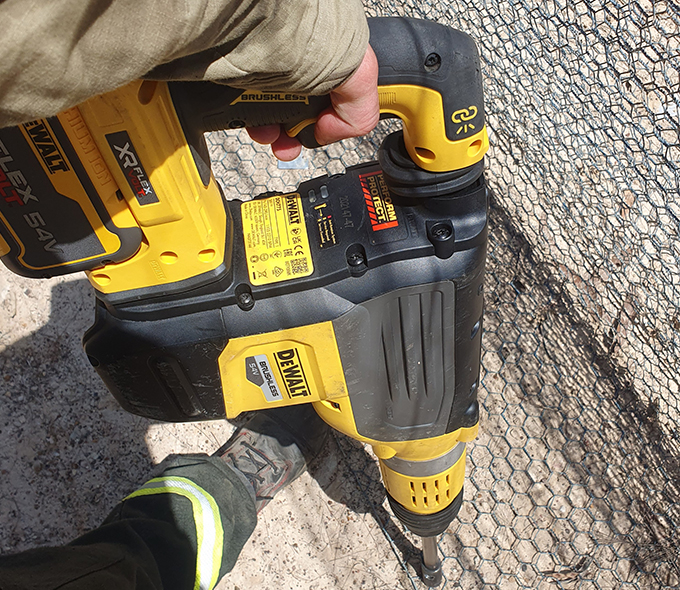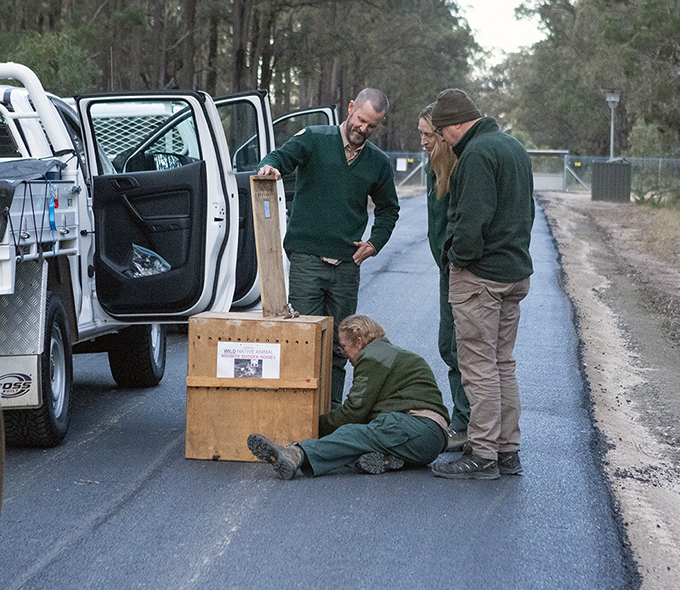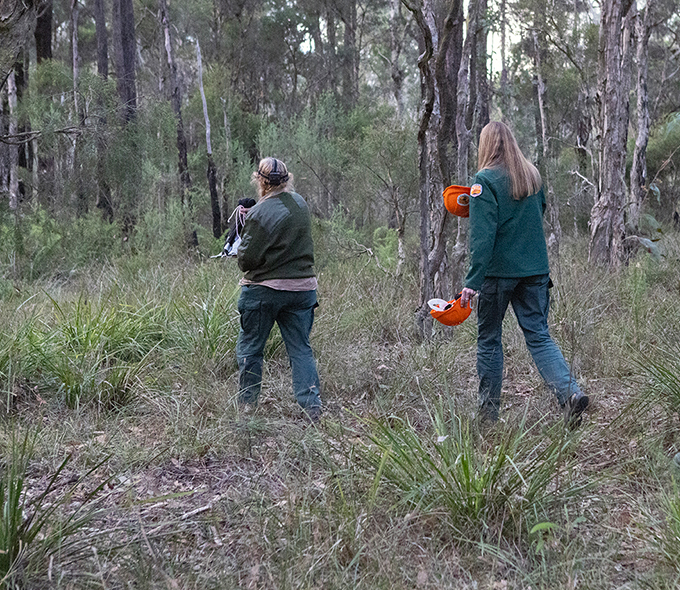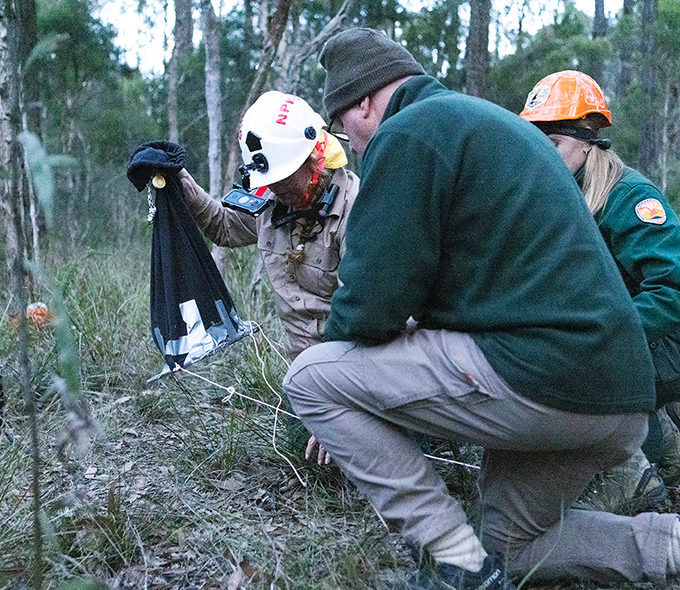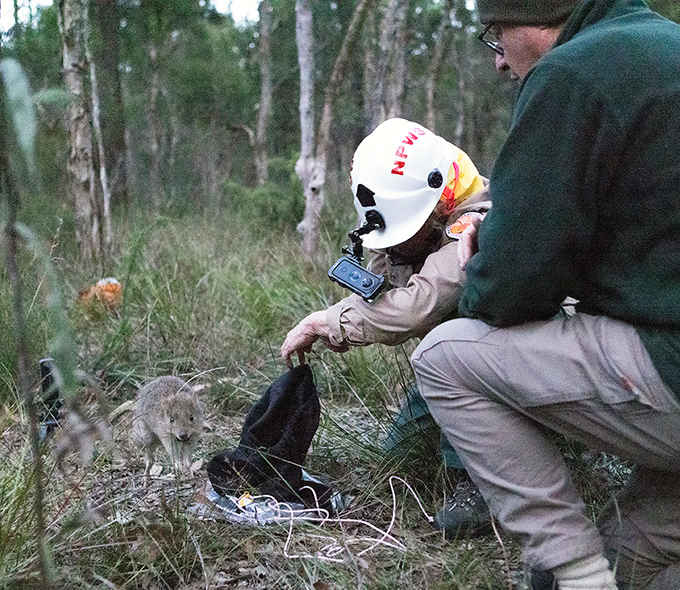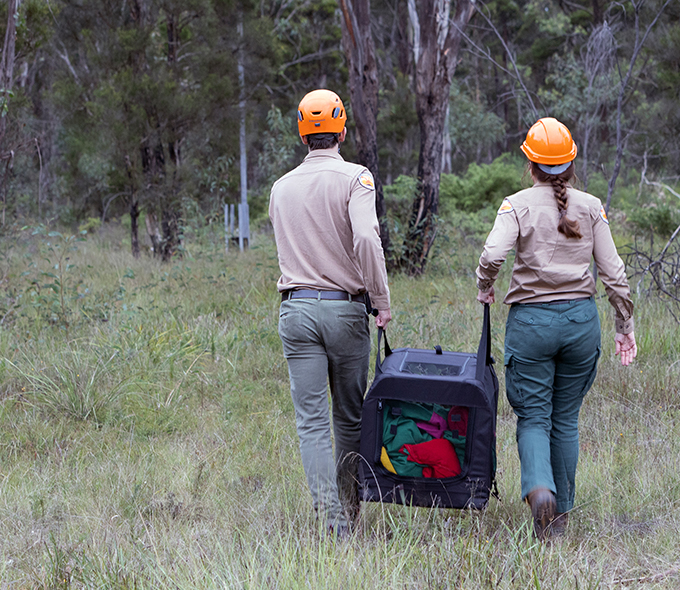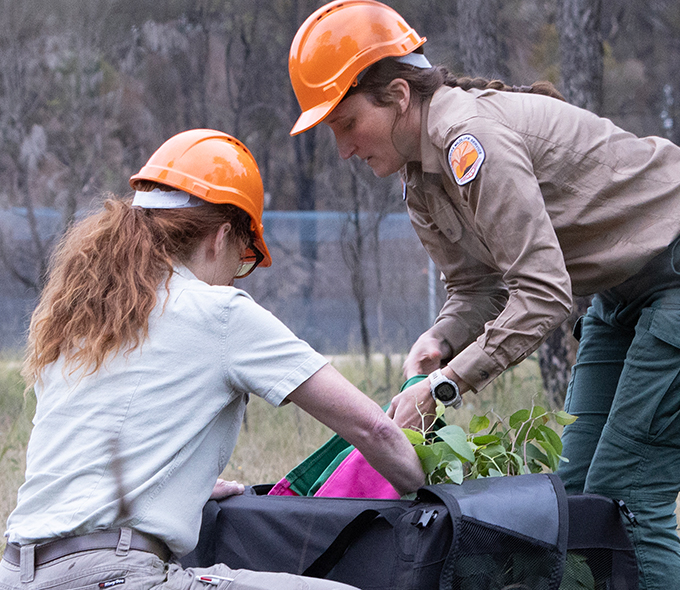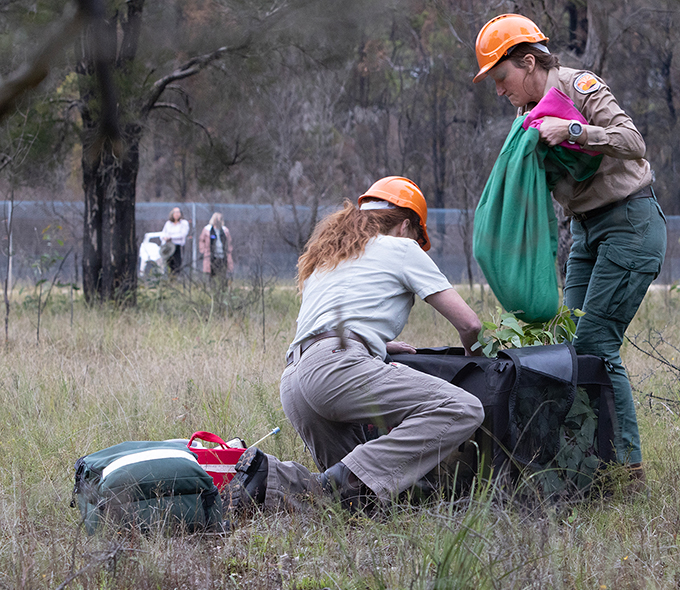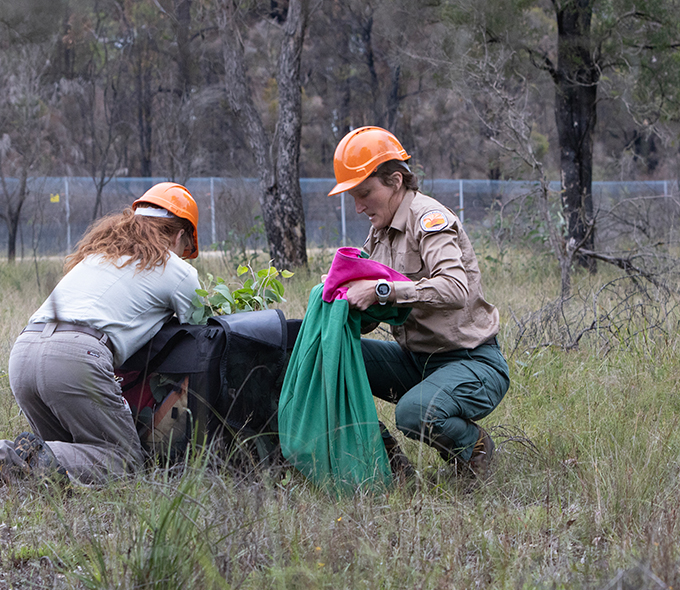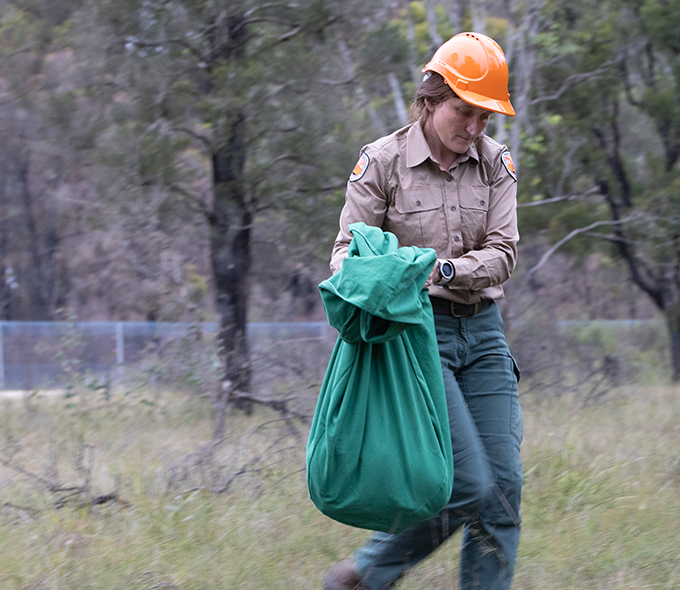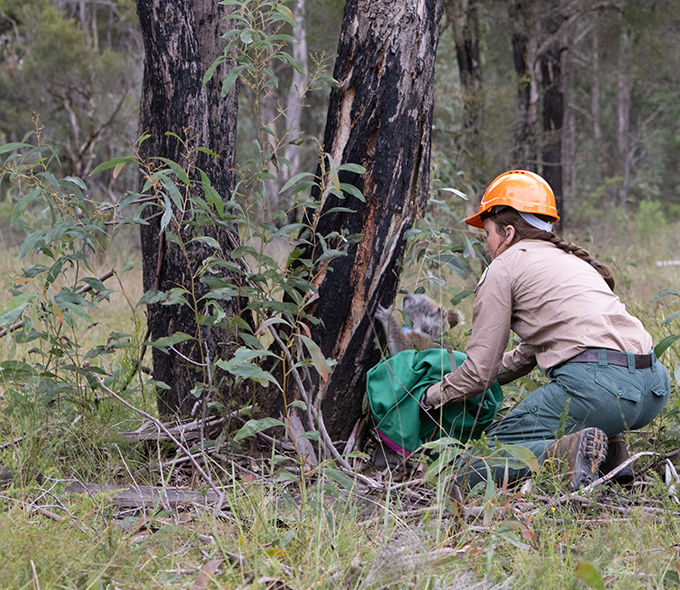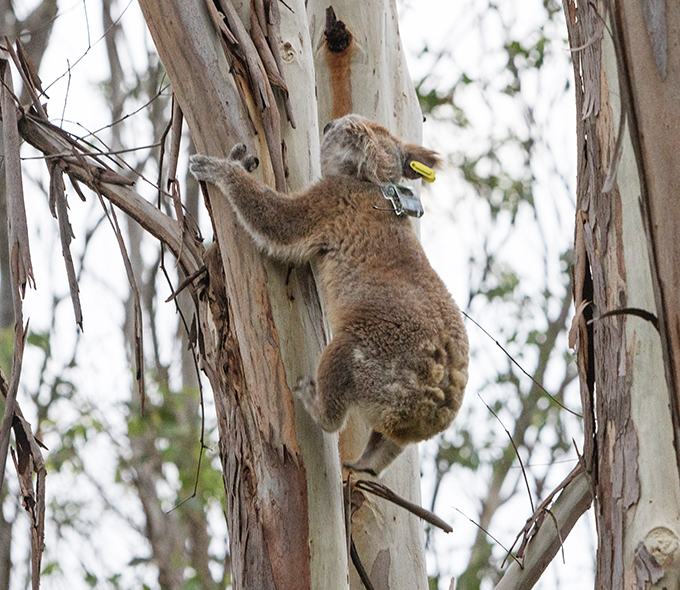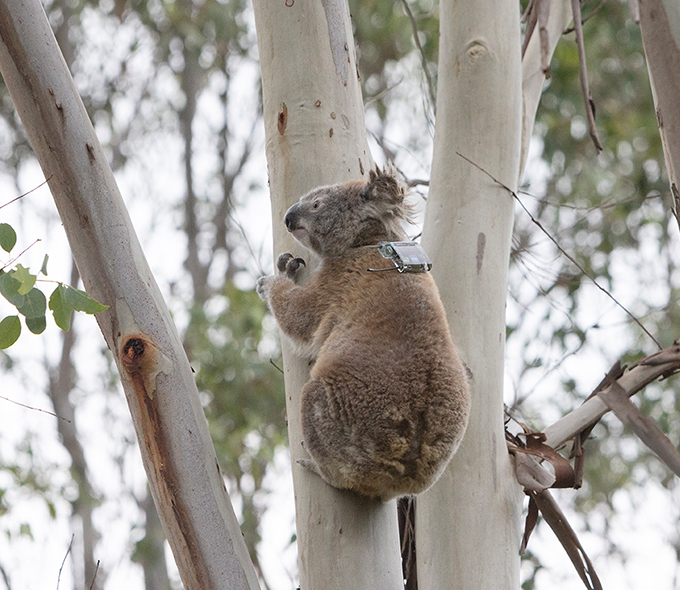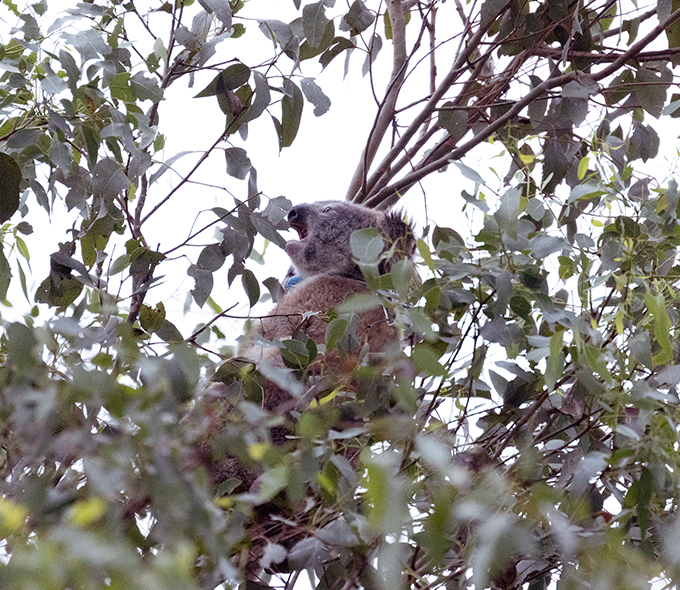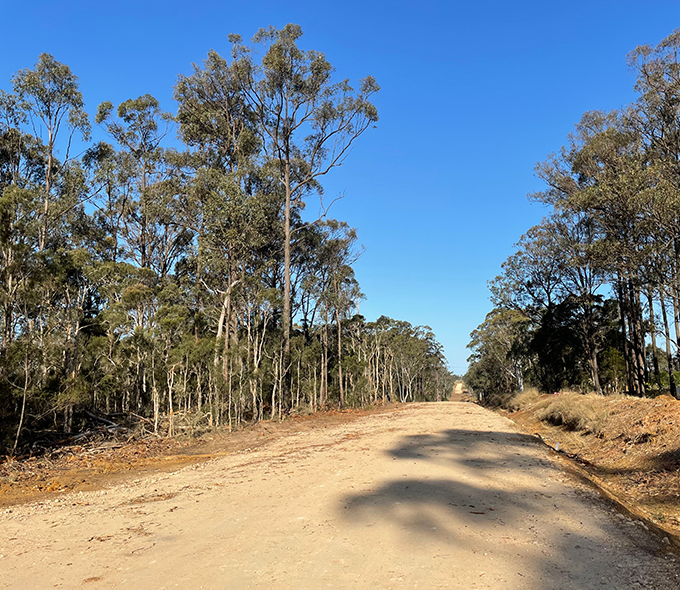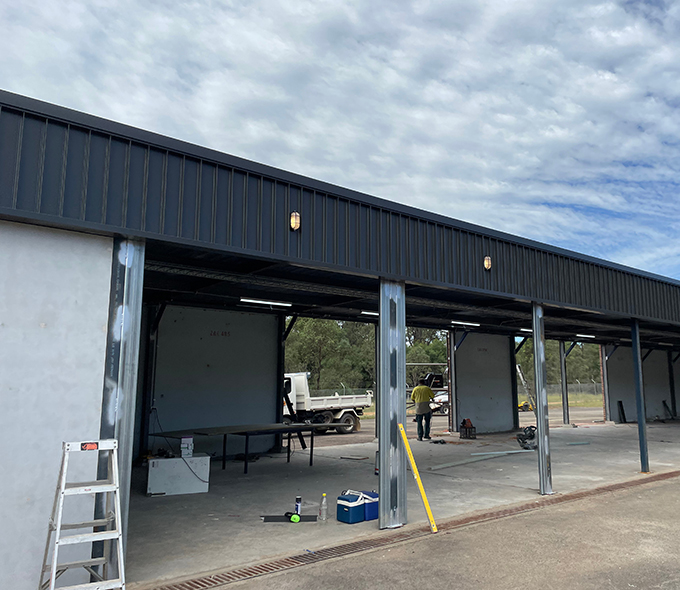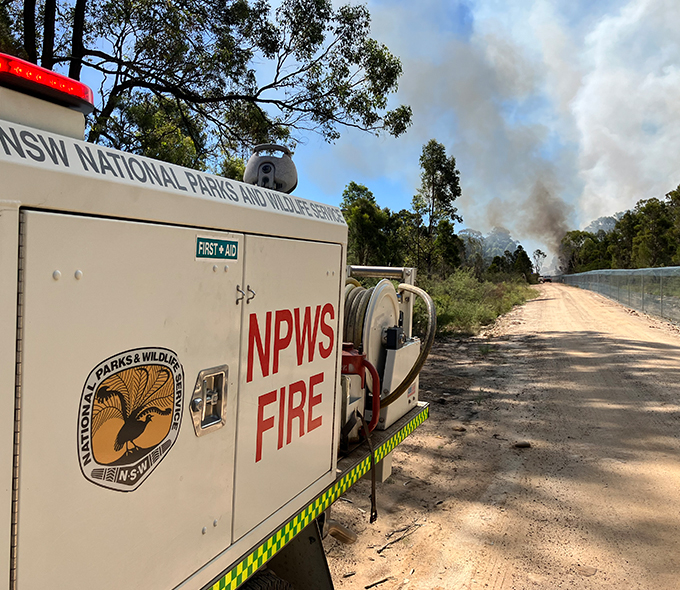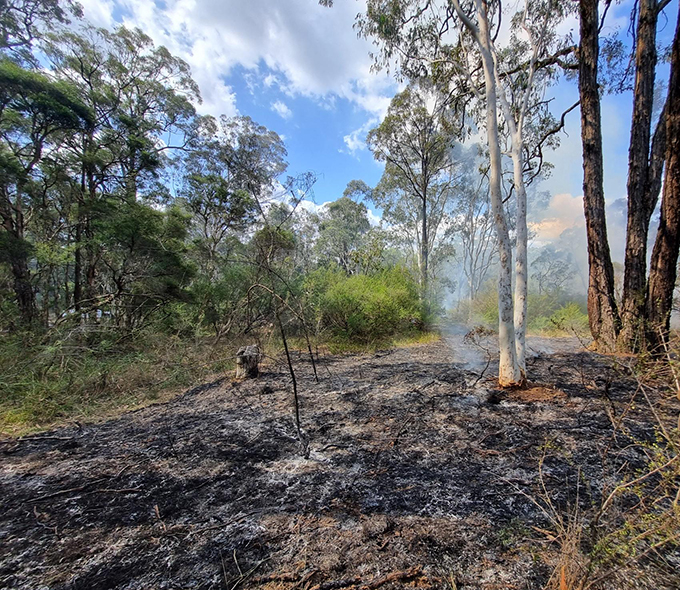Stage 1 'soft release' area is complete
The Stage 1 'soft release' area has been established after successful construction of the conservation fence and feral predator eradication. Feral herbivores such as deer, pigs and hare were also removed from the area. This has allowed the first reintroductions of locally extinct animal species.
The first animal reintroductions have been achieved
The first successful reintroductions of locally extinct animals – eastern bettongs and koalas – have been achieved at Yiraaldiya National Park. All animals are being monitored and are reported to be doing well in their new habitat.
This is an exciting milestone for this project, as the last known record of an eastern bettong in New South Wales is 1906. By the 1920s, the animal was extinct on the Australian mainland. Koala populations have suffered localised extinctions across the Cumberland Plan since the early 20th century.
Eastern bettongs
Eastern bettongs are a small hopping marsupial related to kangaroos. The animals were sourced from Mulligans Flat in the Australian Capital Territory. For the full story and images, including video, see the media release: Eastern bettongs return to NSW after 100-year absence in historic wildlife reintroduction project.
Koalas
The release of koalas in the park was also a significant milestone event supported by Dharug and Dharawal traditional custodians and other local community members.
This reintroduction event goes to re-establishing a disease-free and genetically diverse population that will reinforce nearby koala populations. In the future, koala offspring from the Yiraaldiya National Park will be able to supplement nearby populations that have low growth rates, or face inbreeding or disease threats.
More of this story is to come from the NPWS Koala Translocation Project Team.
Planning for locally extinct animal reintroductions
Reintroduction involves animal translocation – capture from one site (wild or an alternative such as a captive breeding), transportation to, and release at a new site. The release is always followed by monitoring the animal's acclimatisation to their new home environment.
Translocation is done with careful planning based on the best science that assesses animal health and welfare and ensures the highest chance of success. The actual translocation of animals is subject to the final review and approval of these plans.
Animal reintroductions will be ongoing over several years to accommodate the large number of species being brought back to this site. Planning is underway for the 2024–25 reintroductions, subject to final approvals, of the following locally extinct animals:
- New Holland mouse
- long-nosed bandicoot
- bush rat
- koalas.
Stage 2 area construction is underway
Work occurring onsite includes civil works and vegetation management. The upgrade of management trails and floodway crossings for site operations and management (including fire) is well underway. Construction of the conservation fence is scheduled to start in April–May, subject to factors such as weather.
Adaptive reuse and development of existing infrastructure to cater to visitors is underway. The visitor precinct is expected to welcome visitors in 2025.
Hazard reduction burning
Routine fire management activity has been integrated with establishing feral predator-free areas, helping to improve protection for neighbouring properties and communities in the event of future wildfires. For more information, see our media release: Yiraaldiya National Park Hazard Reduction Burn.
Next steps – feral predator eradication
Once the conservation fence is complete, feral predator eradication (cats, foxes and wild dogs) will follow immediately. This will be conducted in line with feral animal control plans and regulations, including public notification of pest control operations (see the National Parks and Wildlife Service Alerts page).
A range of conventional methods will be used, including trapping, shooting and 1080 baiting, following relevant codes of practice and permits from NSW Environment Protection Authority (EPA) and Australian Pesticides and Veterinary Medicines Authority.
'1080' is the common name for the vertebrate pesticide sodium fluoroacetate, used to control specific feral animals such as wild dogs, foxes, feral pigs and rabbits. 1080 notifications will follow the specific legislative requirements and comply with the 1080 Pest Control Order.
Next project update
The next project update will be published as the Stage 2 conservation fence is completed.
